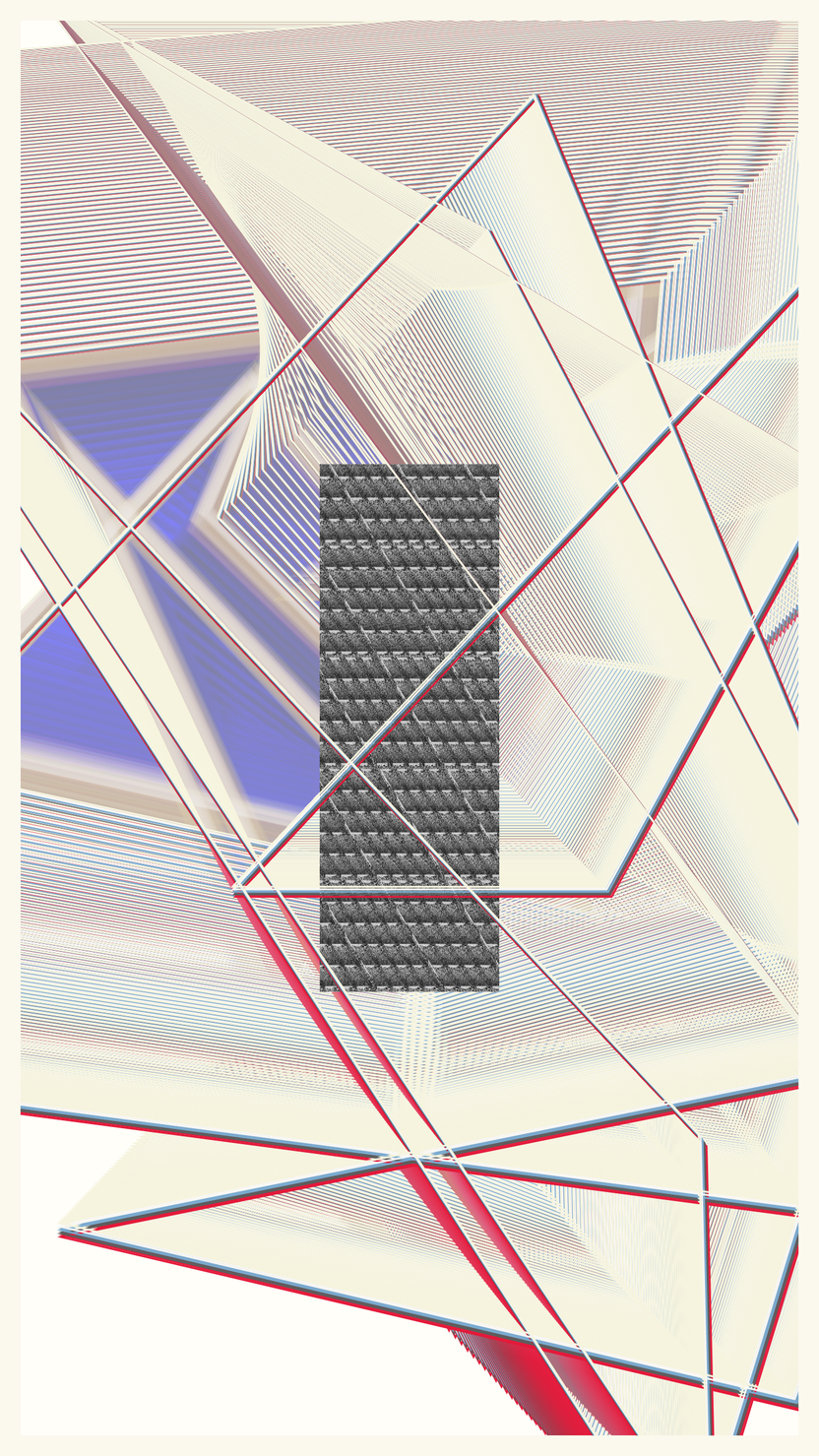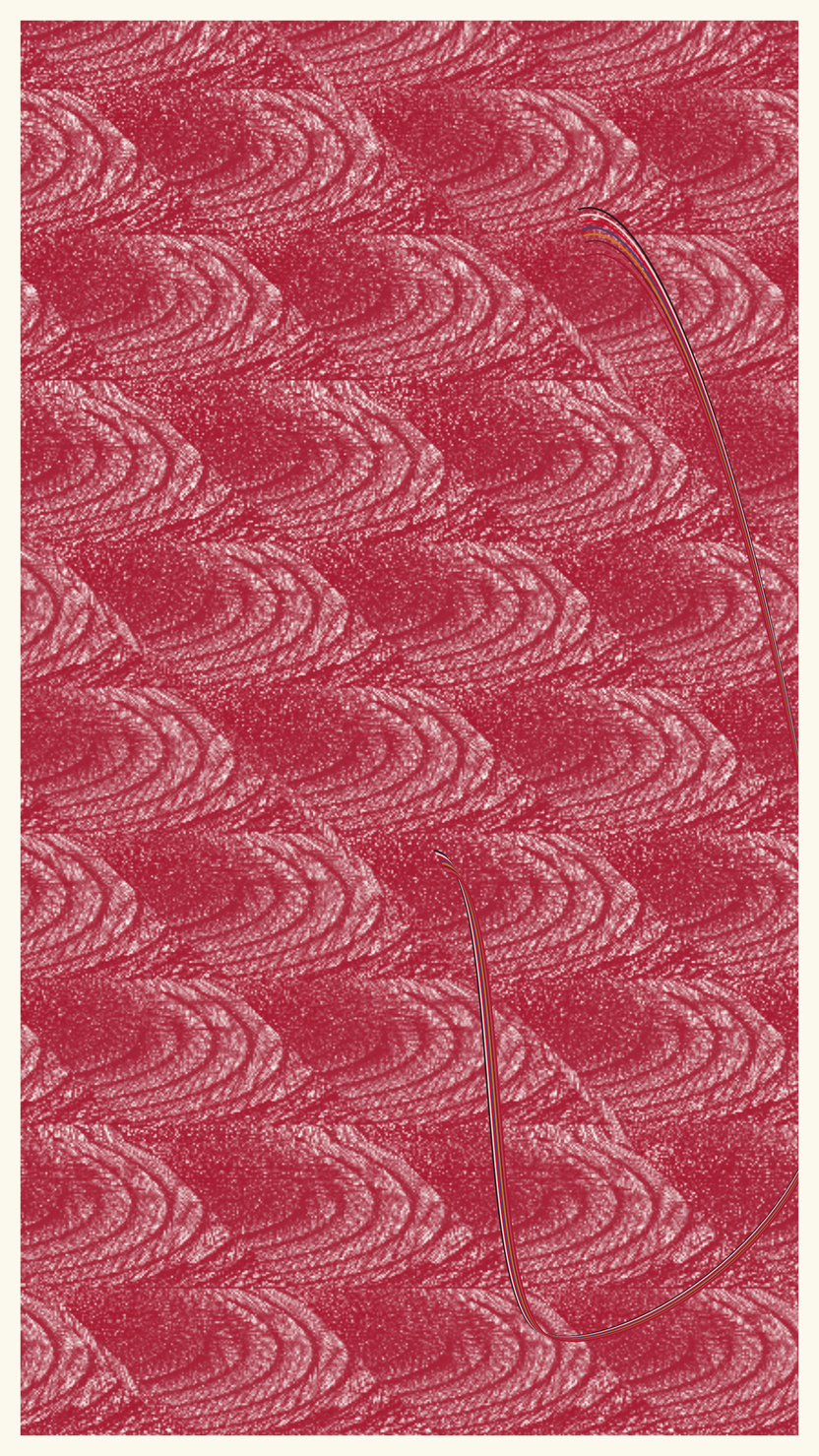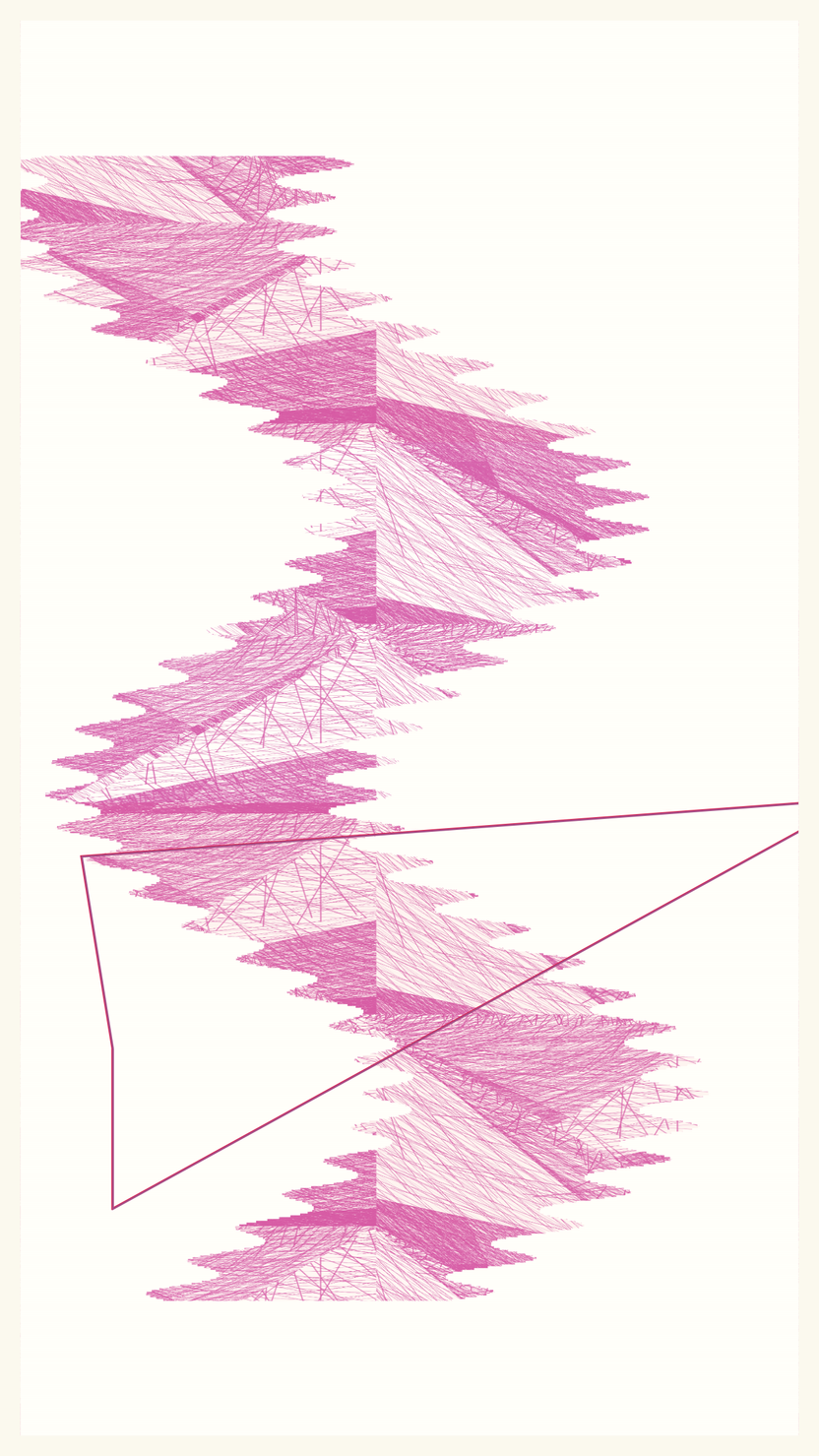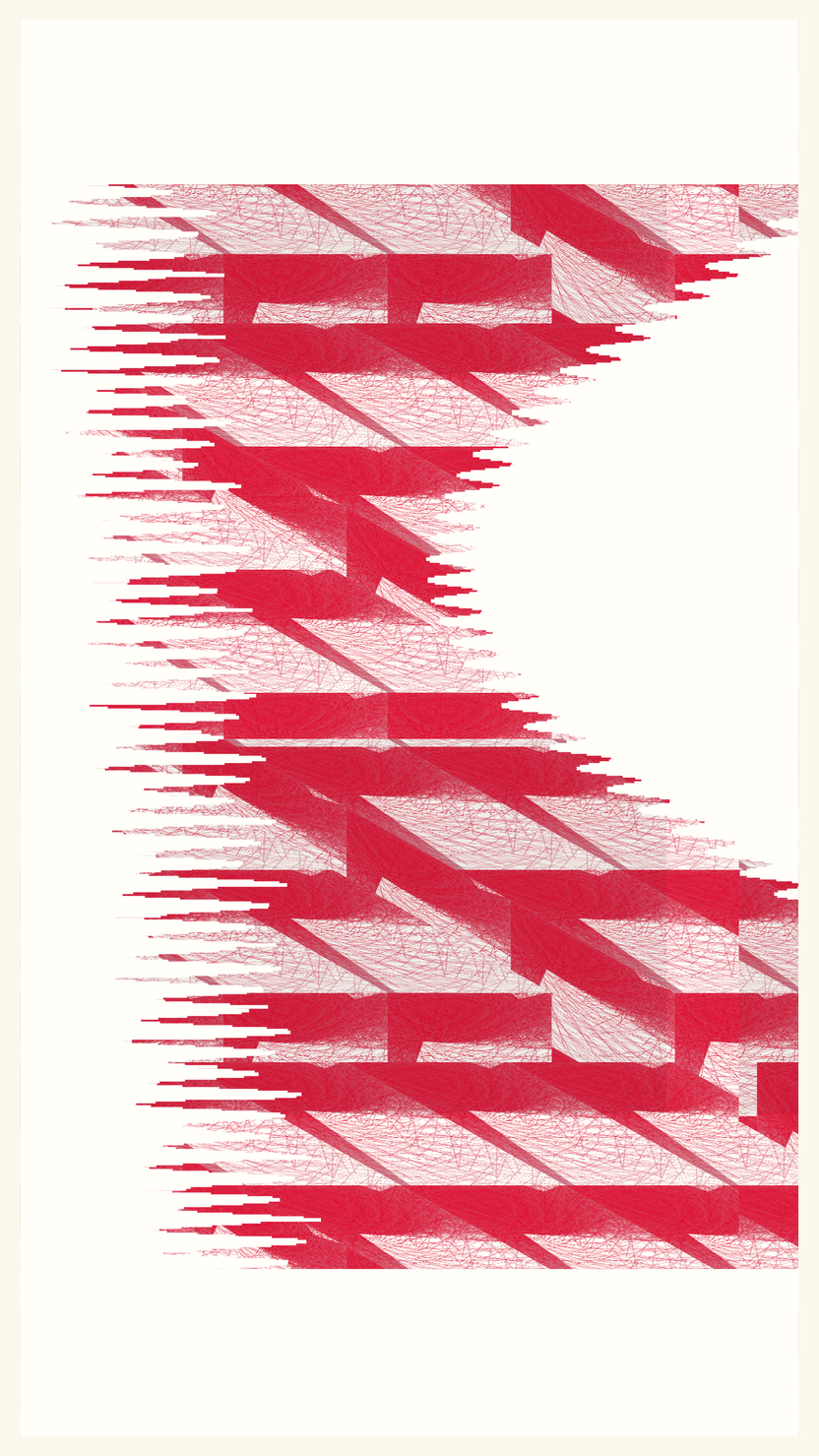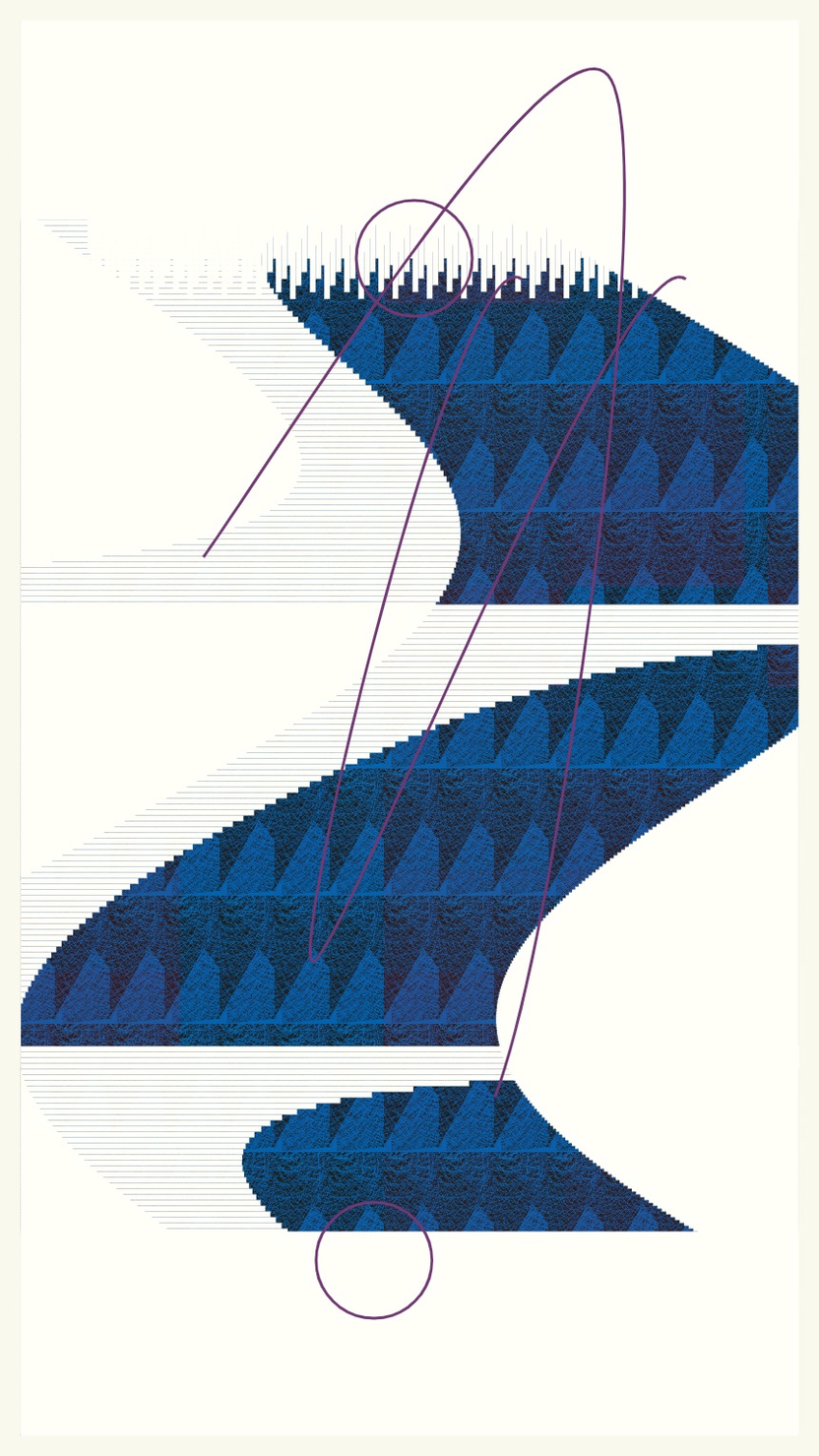
Kinetics by Andrew Mitchell
written by Andrew Mitchell
project name project name project name
The texture developed for Kinetics, deemed The Creation of the Universe (See above) is at its core a color gradient of 3 different colors. Each piece construct’s itself, drawing lines on top of lines to create a unique self contained assembly of materials as opposed to a realistic abstraction. The Creation of the Universe repeats itself in each piece, just as cells do in an organic structure. From here is where it initially got it’s name. Like Tatlin’s Tower spiraling up, Kinetics and The Creation of the Universe spirals endlessly on a defined axis. This spiral is, “the movement of liberated humanity”, according to the late scholar and writer, Nikolai Punin.
project name project name project name
There is an ever expanding space in each piece as lines move from the center of the canvas out in seemingly random dimensions. Under the hood, these movements are purposeful. Each line moves from point to point inside of a predefined grid. This allows shapes and lines to stack in structured, seamless fashion. Grids are inherently the base of constructivist art and using computers, we can take these grids to the next level. With the computing power of javascript, Rodchenko’s 5x5=25 could be n*n=n².
project name project name project name
Generative art gives us the power to create a multitude of unique pieces from just one single script. To some, this brings the same notion echoed by German Dadaist artists unhappy with the apparent simplicity of Constructivists, “Art is Dead”. However, we say to this idea, “Long Live Generative Art”.
